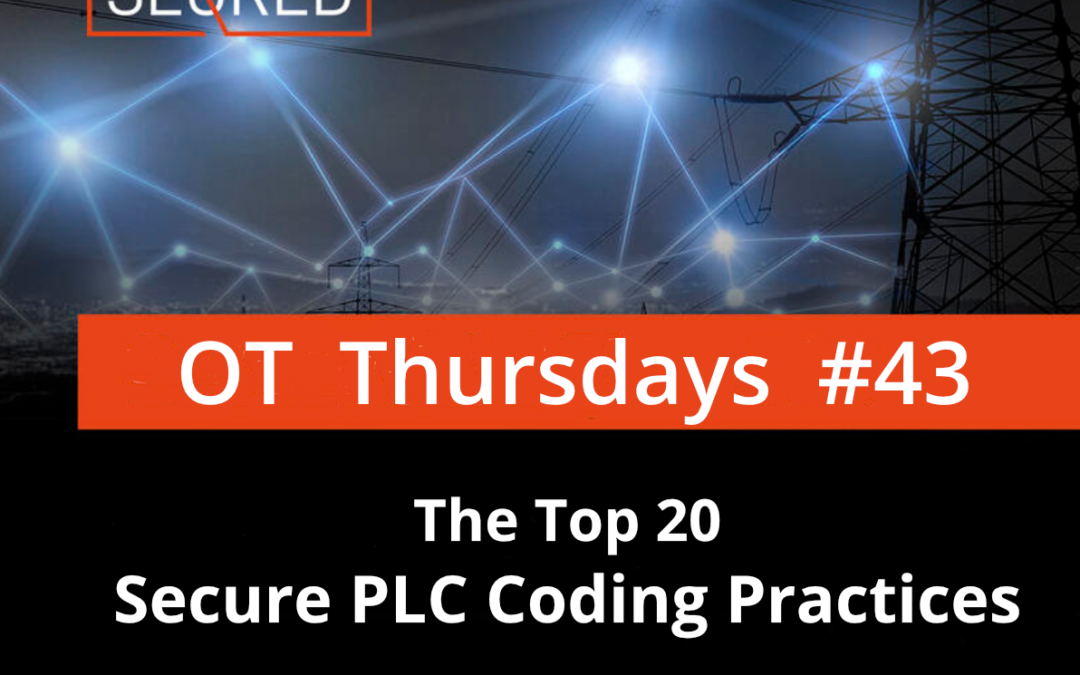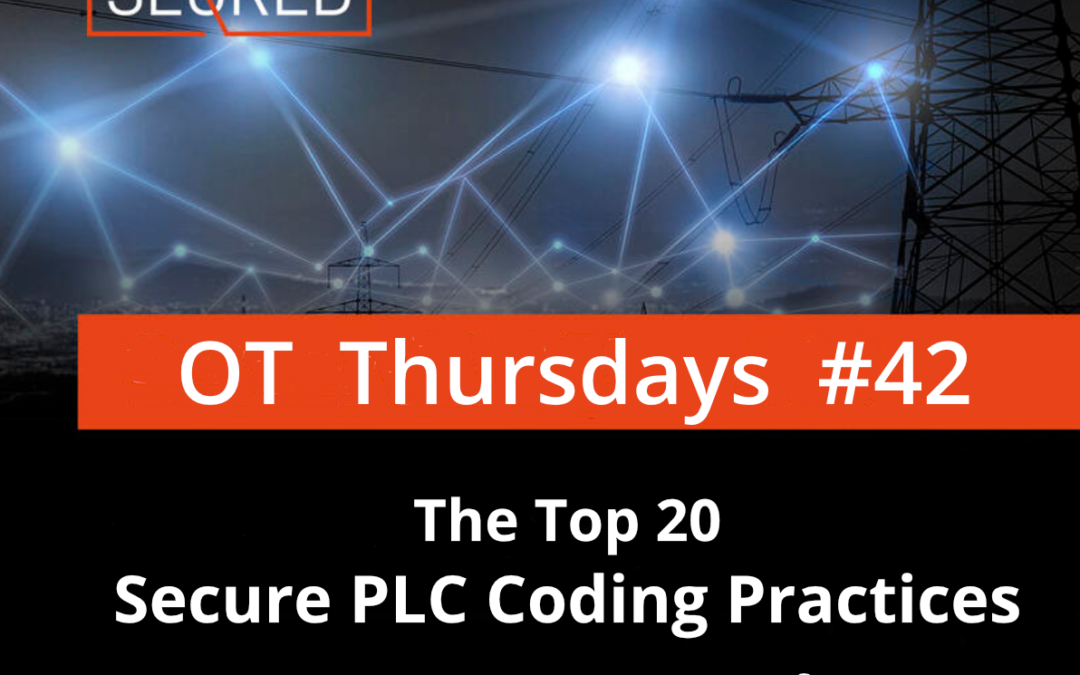
by Eugeniusz Wypior | 8 December 2021 | Blog-EN, Newest post
Eugene Wypior The Top 20 Secure PLC Coding Practices. Part 13 – Validate inputs based on physical plausibility Ensure operators can only input what’s practical or physically feasible in the process. Set a timer for an operation to the duration it should...

by Eugeniusz Wypior | 1 December 2021 | Blog-EN, Newest post
Eugene Wypior The Top 20 Secure PLC Coding Practices. Part 12 – Instrument for plausibility checks Instrument the process in a way that allows for plausibility checks by cross-checking different measurements. Security Objective Target Group Integrity oI/O...

by Eugeniusz Wypior | 25 November 2021 | Blog-EN, Newest post
Eugene Wypior The Top 20 Secure PLC Coding Practices. Part 11 – Assign designated register blocks by function (read/write/validate) Assign designated register blocks for specific functions in order to validate data, avoid buffer overflows and block unauthorized...

by Eugeniusz Wypior | 17 November 2021 | Blog-EN, Newest post
Eugene Wypior The Top 20 Secure PLC Coding Practices. Part 10 – Validate indirections Validate indirections by poisoning array ends to catch fence-post errors. Security Objective Target Group Integrity of PLC variables Product Supplier Integration / Maintenance...

by Eugeniusz Wypior | 10 November 2021 | Blog-EN, Newest post
Eugene Wypior The Top 20 Secure PLC Coding Practices. Part 9 – Validate HMI input variables at the PLC level, not only at HMI HMI access to PLC variables can (and should) be restricted to a valid operational value range at the HMI, but further cross-checks in...






